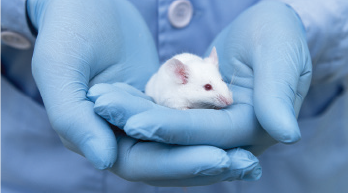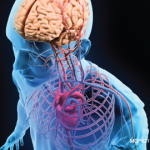
Dr. Pope underscored several research findings that stood out from the pack in his Year in Review talk.
unoL / shutterstock.com
SAN DIEGO—After sifting through the nitty-gritty of the rheumatic disease literature on basic science, Richard Pope, MD—professor of medicine specializing in rheumatology at Northwestern University Feinberg School of Medicine—underscored several findings he thought stood out from the pack in his Year in Review talk at the 2017 ACR/ARHP Annual Meeting.
He reviewed findings from November 2016 through October 2017. These were among the findings he highlighted:
Microglia & SLE
A study published in Nature offered insight into the way microglia may be playing a role in the central nervous system (CNS) symptoms of systemic lupus erythematosus (SLE).1 These brain cells are responsible for pruning and refining synapses, as well as cleaning up debris, such as amyloid plaque, but in disease, they may become inflamed or overprune.
Researchers looking at microglia in mice with lupus-like disease found that phagocytosis of neurons by microglia was increased in a way that was interferon-alpha-receptor dependent.
They also showed increased type 1 interferon signaling in the brains of deceased SLE patients.
“Under normal circumstances … microglia are phagocytosing synapses to keep them properly pruned,” Dr. Pope said. “Under the influence of type 1 interferon, you can see that there is increased uptake of this material. So one wonders: Could this be one of the mechanisms for CNS abnormalities in our patients with lupus—lupus fog and other symptoms that we see in our patients?”
In a study published in Nature Communications, researchers first showed that mice developed osteoarthritis when the adenosine receptor A2AR was knocked out. … The findings show potential for a new therapy.
Fli1 & Scleroderma
The transcription factor protein, Fli1, has been of interest in the scleroderma field for years, but in a study published in The Journal of Experimental Medicine, Fli1 was deleted only in epithelial cells.2
Researchers found that mice with keratinocytes in which Fli1 has been deleted develop dermal fibrosis, esophageal fibrosis and interstitial lung disease.
Dr. Pope said, “The really interesting part of this mouse model, to me, is the fact that these mice developed a systemic increase of IL-6 [interleukin 6] in the circulation,” along with antinuclear antibodies and autoantibodies to lung homogenates, which was not seen in control mice from the same litter.
Then researchers looked at medullary thymic epithelial cells (mTECs), which play an important role in self-tolerance. These cells are normally positive for Fli1 and autoimmune regulatory (Aire) proteins. But both are reduced in these cells in mice with Fli1 deleted from keratinocytes.
“What they’ve shown is that with the reduction of epithelial-cell Fli1, the skin and esophagus become fibrotic”—and this was shown not to be dependent on T cells and B cells, he noted. “However, mTECs were reduced, and this led to a reduction of Aire. This led to a break of tolerance, autoreactive T cells, autoantibodies, and this resulted in autoimmune lung disease.”
He said the study is eye opening “if you have ever wondered why you get fibrosis and autoantibodies and interstitial lung disease” in scleroderma.
“Doesn’t that strike you as a little strange? I’ve always wondered about that. And this article gives a plausible explanation,” said Dr. Pope.
Adenosine & Osteoarthritis
In a study published in Nature Communications, researchers first showed that mice developed osteoarthritis (OA) when the adenosine receptor A2AR was knocked out.3 For better delivery, researchers embedded adenosine in liposomes and injected them into the joints of a mouse model of post-traumatic OA. They found that this prevented and treated their OA, proving that it acted via the A2A receptor by showing that the OA worsened when an A2A antagonist was injected at the same time.
The findings show potential for a new therapy, Dr. Pope said.
“Adenosine is released. It binds to the A2A receptor and it’s chondral protective,” he said. “If adenosine is not there, then that leads to the lack of protection against osteoarthritis.”
IL-17 Therapy, Sialic Acid & Autoimmune Disease
Dr. Pope said a paper in Nature Immunology shed light on why IL-17 therapy may not be as effective as hoped in autoimmune disease and how it may be used more effectively.4
Researchers used neuraminidase to “clip off” sialic acid from immunoglobulin G (IgG) antibodies and saw that the complexes then became much more inflammatory. When the sialic acid was put back, the inflammatory potential was reduced. They then found that removal of sialic acid from IgG in an arthritis mouse model treated with anti-IL-23 reversed the protection of the treatment.
In human patients who were ACPA positive and at risk of developing rheumatoid arthritis, they looked at the level of sialic acid on IgG. They found that those who went on to develop RA within 12 months had lower levels of sialic acid on IgG than those who did not.
The findings might present a therapeutic opportunity, Dr. Pope said. B cells normally produce the enzyme sialyltransferase, which puts sialic acid on IgG. But when influenced by IL-23-activated TH17 cells, this sialyltransferase—and thereby sialic acid—is reduced. It’s then that the immune complexes become much more pathogenic.
“So they’re suggesting that perhaps the IL-17 pathway might be more effective in the preclinical phase,” Dr. Pope said. “And perhaps that’s why they don’t work in patients with established rheumatoid arthritis—because the window of opportunity is already passed.”
Thomas R. Collins is a freelance writer living in South Florida.
References
- Bialas AR, Presumey J, Das A, et al. Microglia-dependent synapse loss in type I interferon-mediated lupus. Nature. 2017 Jun 22;546(7659):539–543.
- Takahashi T, Asano Y, Sugawara K, et al. Epithelial Fli1 deficiency drives systemic autoimmunity and fibrosis: Possible roles in scleroderma. J Exp Med. 2017 Apr 3;214(4):1129–1151.
- Corciulo C, Lendhey M, Wilder T, et al. Endogenous adenosine maintains cartilage homeostasis and exogenous adenosine inhibits osteoarthritis progression. Nat Commun. 2017 May 11;8:15019.
- Pfeifle R, Rothe T, Ipseiz N, et al. Regulation of autoantibody activity by the IL-23-TH17 axis determines the onset of autoimmune disease. Nat Immunol. 2017 Jan;18(1):104–113.


